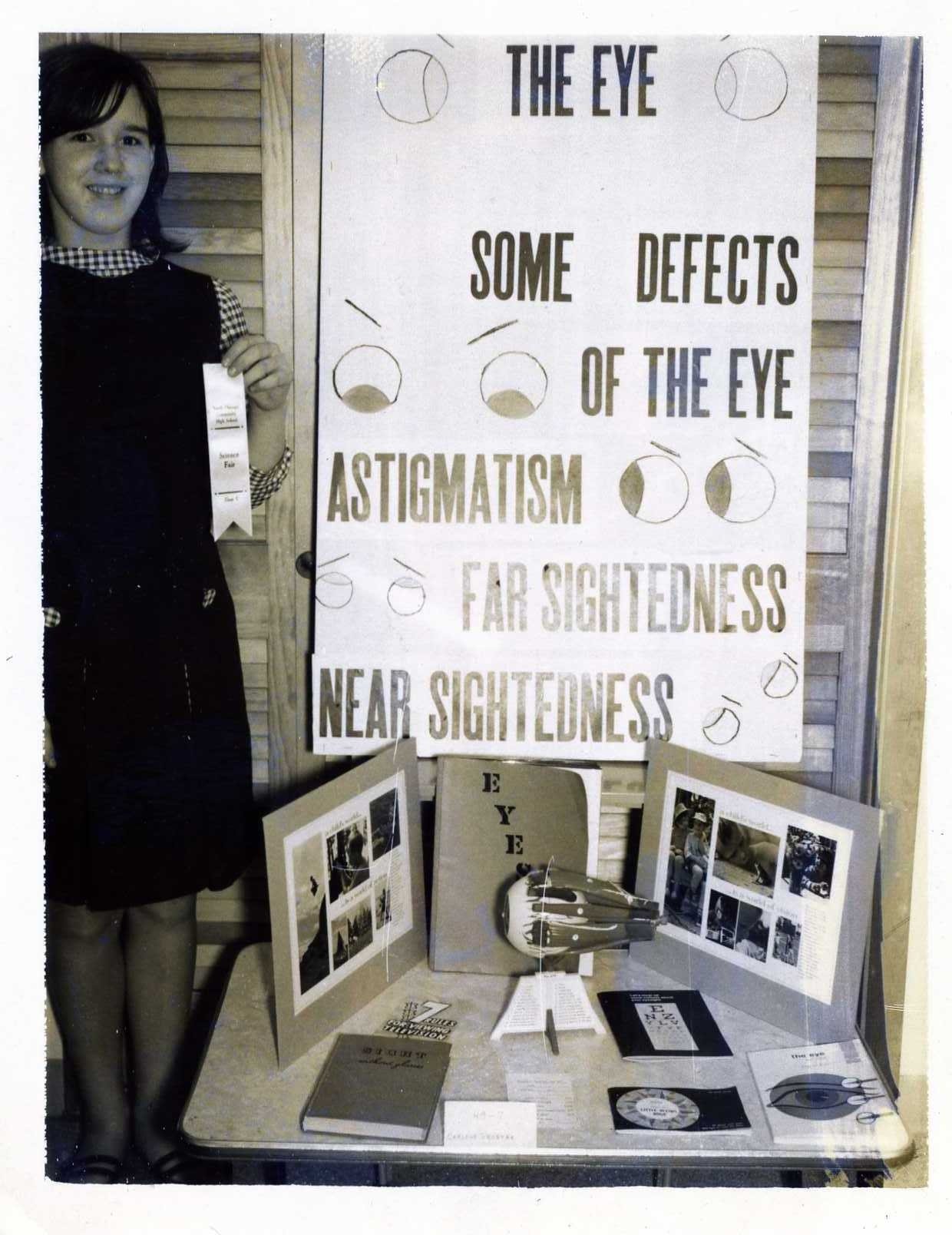Dare to be Different: What do Jacob's Ladder, Eyeballs, and Mice Have in Common?
Jacob’s Ladder
No, it's not a game where players embark on a magical journey to help mice reach new heights by navigating a whimsical world filled with Jacob's Ladders and enchanted eyeballs. Nor is it a new Artificial Intelligent robot.
They are science fair experiments.
Science Fairs…this yearly event caused excitement, enthusiasm, dread, and everything in-between. Once announced, the questions started swirling. Can I come up with a creative idea? Or worse yet, any idea? A unique science fair project can be the perfect opportunity to showcase my originality, critical thinking, and problem-solving skills. If I opt for a conventional project, will it leave an impression on the judges to set me apart from the competition? Ugh, then there is the question: Can I even find all the material? What is the purpose of this project? Do I have the time to complete it? I was determined to make an impression on judges and visitors, so it was time to dare to be different!
Little did we know that, during this childhood project, we were learning outside-the-box thinking with the ability to design and execute a project on time and on budget and manage all the risks along the way. We were project managers before we knew what PMI* was!
Science fairs of the past, and even those of today, are excellent platforms for young minds to showcase creativity and innovation. So, how did we come up with such diverse ideas? Of course, it wasn't as easy as going to the internet and typing in "science fair ideas," which is less than a nanosecond; you can get a plethora of ideas by age, grade, and complexity. We relied on the Dewey Decimal system at the library and the magazine Popular Mechanics, which occasionally included hands-on DIY projects and science topics to create our "winning" experiment.
In retrospect, even though the front end of finding a project was more difficult for us than the current generations, what has remained constant is that the hands-on responsibility has stayed the same. The ideas are only the beginning; the execution and delivery can't be Googled.
So, what did I do? How about the influence of color on our appetites or a project that probes into the correlation between phases of the moon and human behavior? Hmmm, in the 1960s, the psychological influence on food wouldn't have even been "a thing." What about forensic science, combining forensic techniques on meat? It's a novel and unique angle for a science fair project my daughter created in the 1990s. Forensics research was my daughter's science project since NCIS wasn't a popular TV show in her era.
For me, I ended up with the Eyeball. Yes, my blood, sweat, and tears went into detecting eye issues, and I earned a 3rd place ribbon for my effort. The other two innovative ideas belonged to my oldest, who mastered the Jacob’s Ladder, and sister #4, who was measuring how the eating habits of mice affected their longevity.
Are all science projects perfect? No way. Brimming with excitement, I presented my Eyeball to the judges; suddenly, there was an unexpectedly unleashed fury. Bam! Lava, once contained within its mountain, is now splattered everywhere. Everyone left their exhibits and ran into the commotion. My friend stood there covered from head to toe in "bubbly foam."
As I turned the corner, I saw my scientist friend's face move from shock to a chuckle. The absurdity of the volcano's untimely eruption demonstrated a valuable experience for all of us who witnessed the misadventure. Even in failure, there is room for growth, laughter, and understanding that things don't always go according to plan in the world of science and in life.
As grandparents, we can help support our grandkids in embracing the spirit of scientific exploration, where each attempt, whether successful or otherwise, fuels their understanding and curiosity about this wonderful world we live in. After all, science isn't just about significant discoveries—it's also about questioning, learning, and daring to be different.
My grandson isn't old enough to participate in a science fair…yet, but it's never too early for a bit of science. It not only helps in developing a deeper understanding of scientific concepts but also teaches success and failure. Try creating slimy worms or making non-Newtonian fluid. Age should never be an obstacle. To stand out from the competition and garner recognition, daring to be different. I didn't understand this as a kid, but I learned that the journey toward winning a science fair is not solely about the destination but also the process. The skills I acquired during the projects, such as critical thinking, problem-solving, and effective communication, were invaluable. I never became a professional scientist, but my sister, who created the Jacob's Ladder, did.
So, help your grandkids dare to be different and remember that regardless of the outcome, they should be proud of their efforts and recognize the invaluable skills they will develop during the process.
So the next time you have the opportunity to gear up for a science fair, remember - your unique idea might earn you that desired recognition, if not a 3rd place ribbon!
*Project Management Institute




